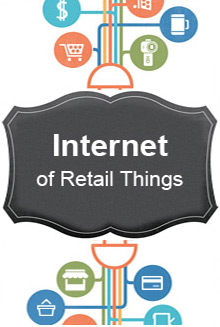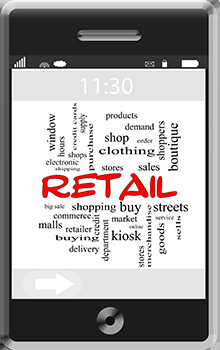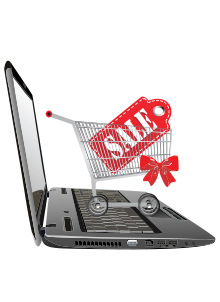IDC predicts that a mind boggling 50 billion devices will be connected to each other or to other people by 2020. This includes all kinds of devices, equipment – stationary or moving;living or non-living- that will connect to the internet with the help of some amazing innovations. The day is not so far out in the future when every industry and sector has its most important components linked to the internet for continuous monitoring. The Internet of Things is the present and the future.
The world of retail is already signing up for membership to the Internet of Things and we are well on the way to witness the impact of the Internet of Retail Things (IoRT). IoRT helps retailers collect data on product purchases and connect better with customers by providing interactive experiences, track products in the supply chain and improve operations and much more. IoRT brings a lot of capabilities to the plate and is bound to make a huge impact on the way brands communicate with customers and customers in turn communicate with the brand.
In a way the basic structures for IoRT are already in place: brands can notify their customers of sales, offers, and other deals through their mail IDs, or through a phone. With IoRT specific devices however, this effort can be made far more focused; for example, a customer entering a retail outlet is recognized by a local IoRT device through location services on her mobile device, and is then sent information about an offer or sale currently on, of which she can then take advantage.
With the many IoRT devices being deployed, a single unitcan be tracked from the moment it leaves its production line until it is sold to a customer by tagging the unit with an RFID. Such tagswill help track dataon delivery times, on-shelf times, stores with the greatest stock turnover, trends on certain products or brands, etc. in amazing detail.Retail store owners can access this data and work with distributors and manufacturers to get on time delivery of fast-moving stock and movement of slow-moving stock to other outlets/retailers where that product/brand is performing better.
Retailers can also keep track of each unit within their store and have a system of automatically placing an item on sale when sales of that product have been slow or there is excess untouched stock. For large value items that a customer agrees to pay for in installments, the customer’s phone can be synced to the retailer’s database to send alerts whenever a payment becomes due.
In the event of a theft, a retailer need not take stock to file claims with the insurance agency, as this too can be automated. With a click of a button a claim can be filed and at the same time a notification can be sent out to distributors notifying them of the need to replenish stocks. Moreover, by having the security system exchange real-time information with the IoRT devices, retailers will be able to set-up an automatic alert to the store staff and security personnel and the local law enforcement, when such an incident occurs, thus prompting quick action on their part.
The other major trend is on highly customized and personalized loyalty programs that focus on the customer’s spending patterns, purchases and social connects. New retail stores are being unveiled where customers just touch and selects the item, and it is ready at a PoSfor quick check-out and delivery.
These are but a few diverse ways in which retailers can take advantage of the growing trend of IoT. Suffice to say that the Internet of Retail Things holds great potential in not only communicating with the customer, but also in understanding local, national and international trends through simple product tracking. IoRT willsimplify operations, help better engage with the customer and drive the growth of the retail industry in the years to come.

Sandeep is a former Happiest Mind and this content was created and published during his tenure.








